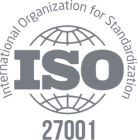Driving when the weather is foggy makes it annoying at best and risky at worst.
Similarly, if you can't find your way through an office, you may end up getting lost -- or just wasting time you could've easily used differently. Imagine putting new employees or office guests in the position of being late for a meeting, unable to find your desk, or missing their flight. Even worse, imagine your employees not being able to find the emergency exit when needed.
Cosmin Patlageanu, CMO at Yarooms and Michael Pasket VP of Sales at Mappedin had a chat about navigation in the office and its importance. Here’s a quick look at what they discussed:
The Impact of Poor Office Planning
A less-than-ideal office plan might sound like a "task for the future", but the impact of poor office planning can be felt every day. From lost productivity to employee frustration, a poorly planned office can lead to serious consequences for your business.
For example, if you're in school and you're running late for class, the last thing you want is to get lost trying to find your way. This can be especially frustrating if the class is in a different building and you end up draining all your energy in an attempt to find the room.
Good office planning shows visitors and employees that you care about how they use their energy when they're at work. Whether you're on a hybrid model or a full in-office one, new and old employees alike will appreciate the ease of finding their way around. No one likes getting lost or wasting time trying to navigate through a poorly designed-office.
Moreover, poor office plans can leave a negative lasting impression on visitors too. For instance, if someone needs to come over and make a presentation or sit in on a meeting with you, they're already nervous enough as it is -- they don't need the extra stress of spending too much time on finding the right office.

How to Make a Good Floor Plan for Your Office
Cosmin asked Michael about his best tips for making a good floor plan for your office. Here are some of the main ones he suggested:
The Overall Naming & Structure
Building a sound, logical naming structure is a key component in creating a good floor plan. A well-thought-out naming structure can help reduce confusion and make it easier for employees to find their way around the office. Additionally, having an easy-to-follow numbering system can also aid visitors in finding their destination without any hassle.
For example, office pods that are naturally working together more recurrently should always be next to each other. Sales and Marketing teams, for instance, should be situated closest to one another since they collaborate frequently. Similarly, accounting and finance teams should also be placed next to each other as they often work closely on financial matters.
Think of how when you go to the supermarket, olive oil and tomato paste are quite close to the pasta section -- the idea is to make things easier for you and to help you better navigate the supermarket and be more efficient.
The Use of Visual Cues & Signage
Visual cues such as color-coded walls or different flooring patterns can be extremely helpful because humans are more inclined to process visual information faster than written words. Using color-coded signs or different flooring designs can help guide employees and visitors to their desired location with ease.
Moreover, having clear and visible signage throughout the office is crucial in ensuring smooth navigation. This includes placing signs at junctions, doors, and elevators, as well as using clear arrows to indicate directions. Not only does this make it easier for people to find their way, but it also adds to the overall aesthetic of the office.
Avoid Over-Embellishment & Over-Stimulation
While the desire to create an attractive and vibrant office environment is understandable, it's crucial to remember that over-embellishment can lead to sensory overload, which in turn can negatively impact productivity and navigation.
A space that is too visually stimulating with excessive patterns, loud colors, or an abundance of décor can distract and overwhelm employees and visitors alike, making it challenging to focus and move around efficiently. The key is to strike a balance between aesthetic appeal and functional simplicity, ensuring the workplace is conducive to both well-being and productivity.
Furthermore, an office layout that prioritizes clear, uncluttered spaces not only facilitates easier movement but also promotes a more relaxed and productive atmosphere. It allows for natural light to permeate the space more effectively, which has been proven to boost mood and energy levels.
A minimalist approach to office design, with thoughtful consideration given to color schemes, furniture placement, and decorative elements, will ensure that the office remains a place where employees and visitors feel comfortable, focused, and efficiently guided through the space.
Make Sure You Cover Accessibility Needs
A good office plan is not about just aesthetics, but also about inclusivity and accessibility. It's crucial to consider the needs of all employees when creating a floor plan, including those with physical disabilities or impairments.
This may involve incorporating features such as ramps, elevators, and wide doorways to accommodate wheelchairs or other mobility aids. Additionally, ensuring that areas like break rooms, restrooms, and meeting spaces are easily accessible for all employees is crucial for a productive and inclusive workplace.
Understand Humans Are Creatures of Habit
People don't really like going out of their way -- or, in the case of an office space, out of the more familiar spaces they use recurrently. For instance, if you usually work in Building A and you have to go to Building B and everything looks different there, you might feel lost, which can be incredibly stressful.
To avoid this, it's essential to keep consistency in mind when creating an office floor plan. Grouping similar departments and functions together and keeping frequently used spaces in close proximity can help employees develop a sense of familiarity and comfort within the space.
Digitize Your Office
The easiest way to make sure your office plan is always up to date and ready for any kind of changes is to digitize it correctly. Here are a couple of things Michael pointed out about this:
Maps Are Hard to Maintain
Traditional maps used to do the trick in more traditional office spaces -- but they can very easily become outdated and difficult to maintain in a constantly evolving modern office environment. That's why digitizing your floor plan can be incredibly helpful.
Digital maps are much easier and quicker to update, allowing for changes to be made seamlessly. This is especially useful when it comes to making structural or organizational changes, such as moving departments around or adding new workspaces.
For example, Mappedin streamlines the process by enabling smooth updates throughout the entire system, enhancing accessibility for employees on various devices. If, for example, your office manager chooses to change the location of a coffee maker, they can easily update the new location in the system and everyone will have instant access to the new information. Similarly, if your organization decides to repurpose a game room into a conference room, Mappedin makes it so the updated floor plan can be easily shared with all employees.
Visual Guidance Is Not About Signage Only
Offering visual guidance doesn't have to be limited to traditional signage or maps. There are various technological solutions available that can enhance navigation and provide a more seamless experience for employees. These include interactive floor plans, digital kiosks, and wayfinding systems. Some specific use cases of how this can be applied include:
- Marking not just objects/ static places on the map, but people too (e.g., showing where security is on the map, so that everyone can quickly know where to go in case of emergency)
- Measuring occupancy tracking (and using workplace analytics to understand area usage)
- Knowing who's around you as an employee (so you can choose the best desk for when you come to the office)
- Aiding net neutrality by sharing accurate information about available workspaces, encouraging employees to move around, and avoid overcrowding in one particular area.

The Biggest Challenge: Analysis Paralysis
One of the biggest challenges in adopting and implementing a digitized, efficient floor plan is the so-called "analysis paralysis," or getting bogged down in too many details and options. To avoid this, organizations must prioritize their specific needs and goals when considering different technological solutions.
It's easy to get caught in the many things you probably have to do to ensure your office plan and layout are properly updated and maintained, but it's important not to lose sight of the bigger picture. An approach of the crawl-walk-run type can be useful, where the organization gradually implements digital solutions and continuously evaluates their effectiveness.
Is It All Worth It?
The simple answer is, "yes, it is worth the effort." A well-designed and efficiently laid out office space can have a significant impact on employee productivity, satisfaction, and overall well-being. And a digitized map and hybrid work system can help you achieve that.
Want to learn more about the topic? Listen to our podcast on Youtube, Spotify, or Apple Podcasts.
Yarooms has partnered with Mappedin to offer you the best of all worlds: a hybrid work system that's ready to use and provides you with priceless analytics on the usage of your office spaces AND a wayfinding solution meant to make employee and visitor experience a thousand times smoother.







